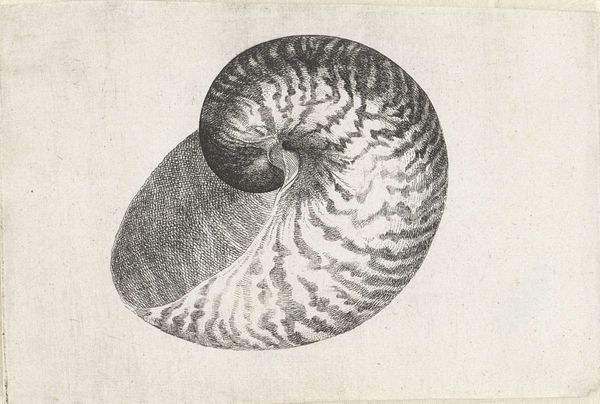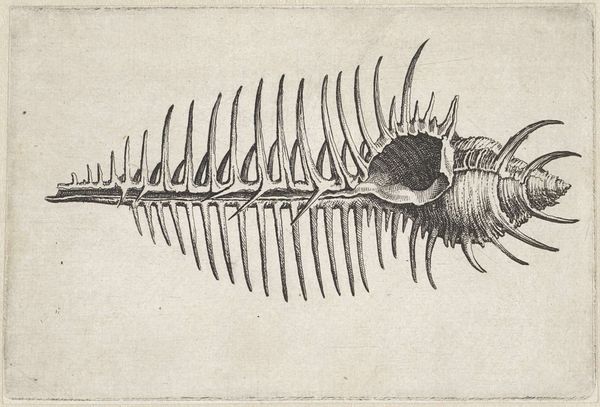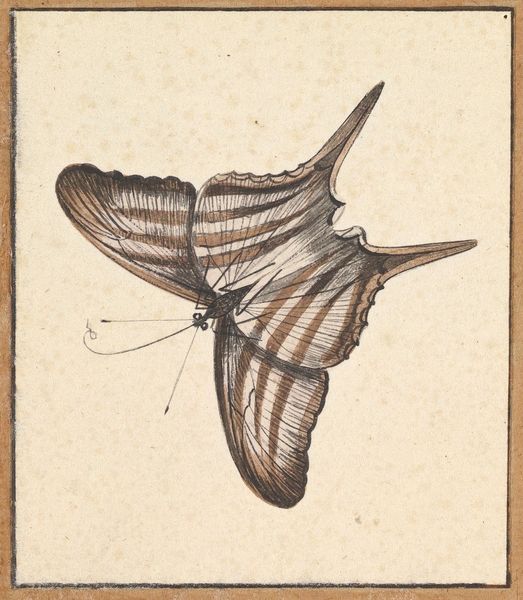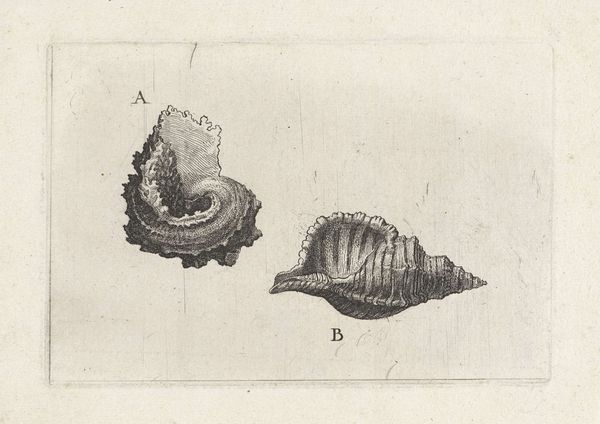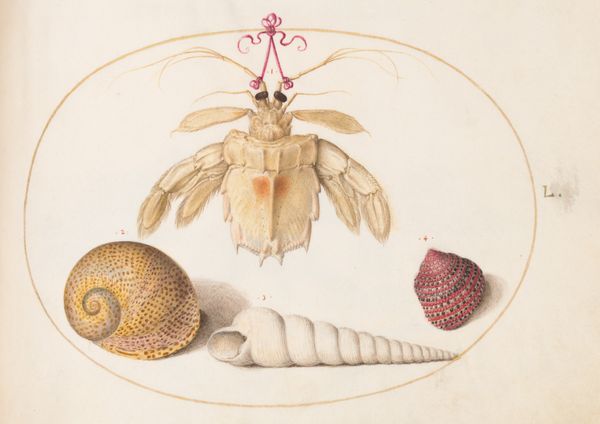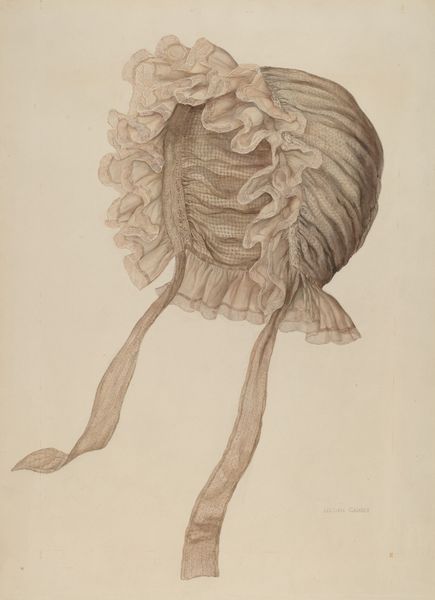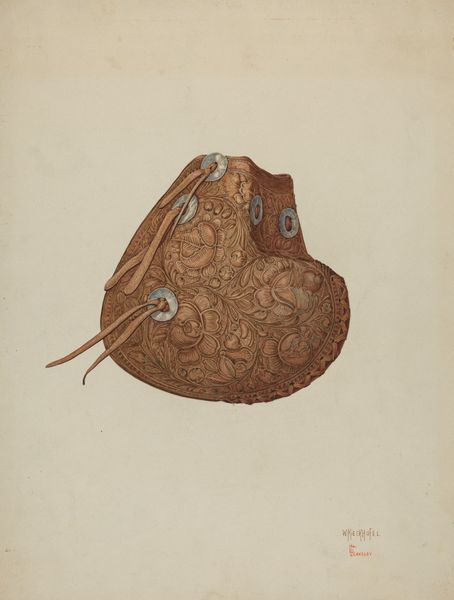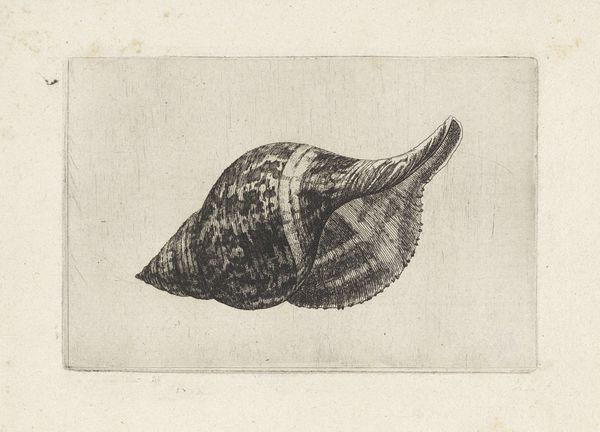
painting, watercolor
#
dutch-golden-age
#
painting
#
oil painting
#
watercolor
#
coloured pencil
#
watercolour illustration
#
watercolor
Dimensions: height 50 mm, width 66 mm
Copyright: Rijks Museum: Open Domain
Jan Augustin van der Goes made this image of a shrimp on vellum in the Netherlands in the late 17th century. During the Dutch Golden Age, there was an unprecedented demand for art from a growing middle class. This demand fostered specialization, and many artists focused on specific genres, such as still life. Painted from direct observation, the shrimp is presented naturalistically against a dark ground. This humble crustacean mirrors the wider society, one built upon maritime trade. At this time, the Dutch East India Company dominated global commerce. Its ships brought wealth and exotic goods but also facilitated the brutal realities of colonization and the slave trade. To understand this image fully, we need to research the economic and social structures of the time, including the artist's role in this complex web. Only then can we begin to appreciate the full meaning of such a seemingly simple still life.
Comments
No comments
Be the first to comment and join the conversation on the ultimate creative platform.



